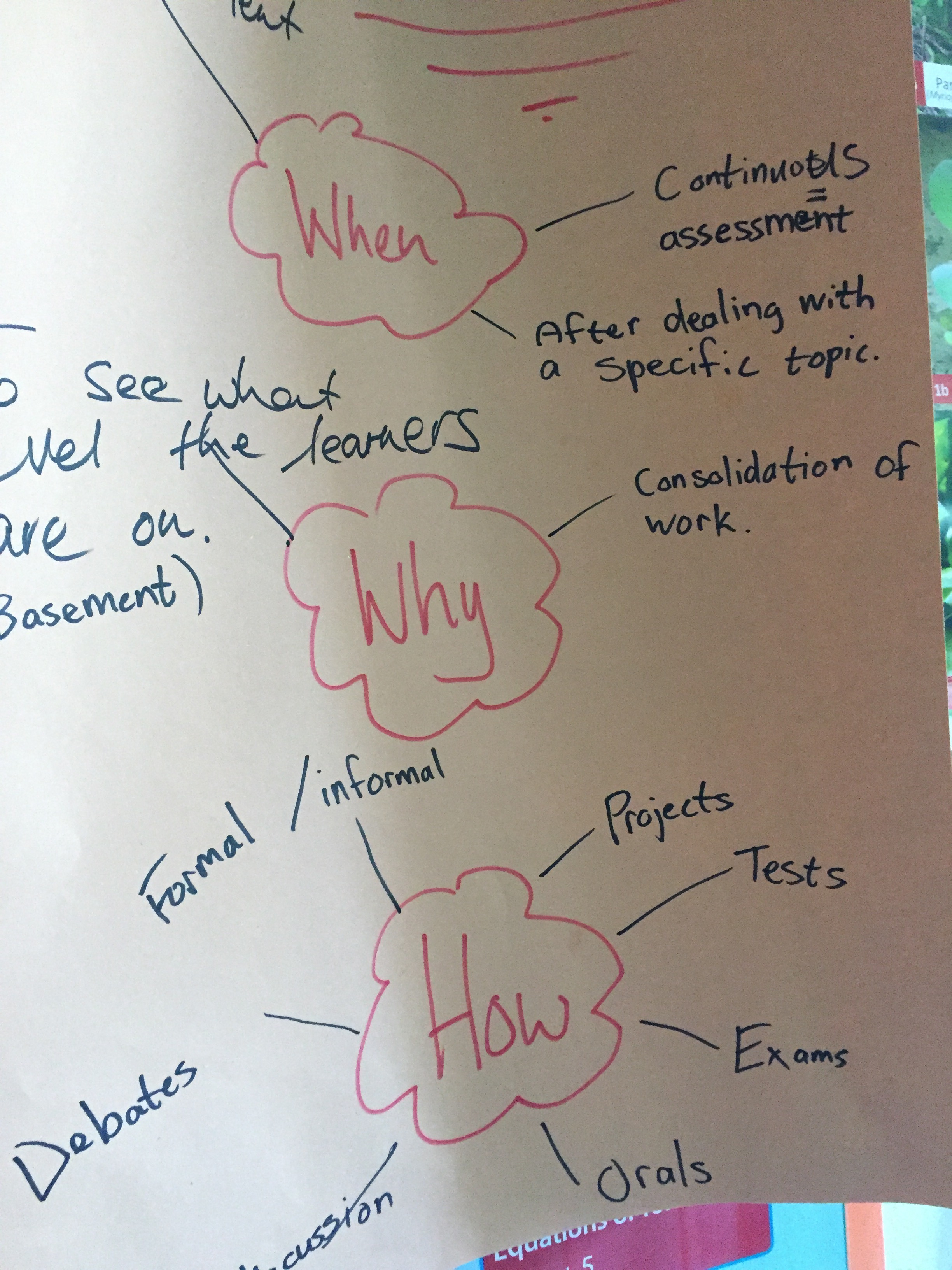Details
Date: 10 March 2016 Time: 3:00 pm
Present: Marie Joubert and Ingrid Mostert (AIMSSEC)
Glen Birtles and Hanneke de Wet (Vista Nova)
15 other teachers of mathematics, science and languages (Vista Nova)
Notes
Hanneke, who took part in the FaSMEd research, welcomed the FaSMEd researchers and explained to her colleagues something of what the project was about and how she had experienced it.
We began by asking the teachers to work in pairs or small groups to discuss when, how and why they assess their learners. We provided felt pens and poster paper and asked them to create a poster to represent their thinking. Figure 1, below, shows a small group of teachers during this discussion.
 Figure 1: A small group working on a poster
Figure 1: A small group working on a poster
We asked the teachers to stick their posters on the wall and to look at one another’s posters to see what other groups had said. There followed some discussion, leading to a detailed discussion about formative assessment as a process. Figure 2 shows one of the posters.
 Figure 2: One of the posters
Figure 2: One of the posters
We discussed that, in the process of formative assessment, teachers need to gather information about their learners’ thinking and talked about some ways to help make the learners’ thinking visible: posters, mini whiteboards and through pair work and active learning on activities such as classification tasks, which use physical materials. We asked Hanneke to talk briefly about her experience of using mini whiteboards and other teachers also shared some of their experiences of using mind whiteboards.
As there were English and science teachers in the group, we demonstrated an example of a sorting or classifying activity in each of these subject areas. Following this, we discussed the revision lesson we had devised at the request of one of the teachers in another school, explaining that the learners had been given some cards with questions or statements on, each of which had the answer 3, 4 or 5. The learners’ task was to group the cards according to the answers. We used big example cards to model the activity.
The teachers were given sets of cards, poster paper and Prestick and asked to work through the task themselves, as shown in Figure 3.
 Figure 3: Two teaachers working on the activity
Figure 3: Two teaachers working on the activity
As the teachers were completing the activity, we divided the board into columns, headed with 3, 4 and 5. We handed out big versions of some of the small cards, and then asked the teachers to come and place the card they had been given in the appropriate column. This generated some mathematical discussion.
We discussed how the modelling the activity, the pair work and the whole class discussion at the end (supported by the big cards) all provide opportunities for teachers to gather information about the current understanding of the learners.
We invited Glen to contribute his thoughts about pair work; what he had done during pair work and what he had learned. We discussed the role of the teacher during pair work in some detail.
Finally, we showed some video clips of the lesson: Regis with mini whiteboards and talking to pairs; Memory explaining the activity; Shahida talk to pairs and learners explaining on the board (using of big cards). We concluded by showing a video clip taken from one of Hanneke’s lessons (classifying triangles).